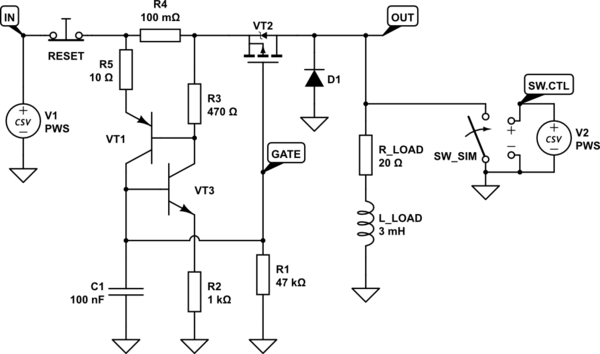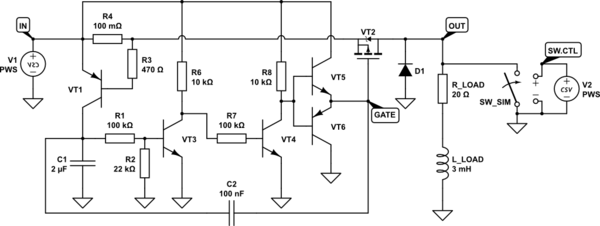The circuit you show is a current regulator, not a fuse. Once the output is shorted, VT2 is controlled to limit the current at about 5-6A, and it will dissipate accordingly (>60W), as long as the short circuit is present. It will quickly overheat and get destroyed.
Instead, you'd probably want a circuit that latches into the OFF state. To reset it, the power must be removed then reapplied, after the short circuit was removed of course.

simulate this circuit – Schematic created using CircuitLab
R4 is the current sense resistor, R3-VT1 detect the excessive current, VT3 latches VT1 once it starts turning on. R2 limits the SCR ON current. C1-R5 add rudimentary immunity against transients. D1 protects against negative spikes generated by the load inductance.
Instead of a permanent latch, we can turn the load off for some fixed duration, then turn it back on - and off again if the short persists. This can be done with a monostable.

VT3 and VT4 are inverters. The 2nd inverter's output is buffered from C2 and VT2's gate capacitance by the buffer VT5 and VT6.
C2 adds positive feedback that speeds up the output transitions of the latch.
To prolong the off time, increase C1 and C2 by the same factor, e.g. both by 5x, etc.
